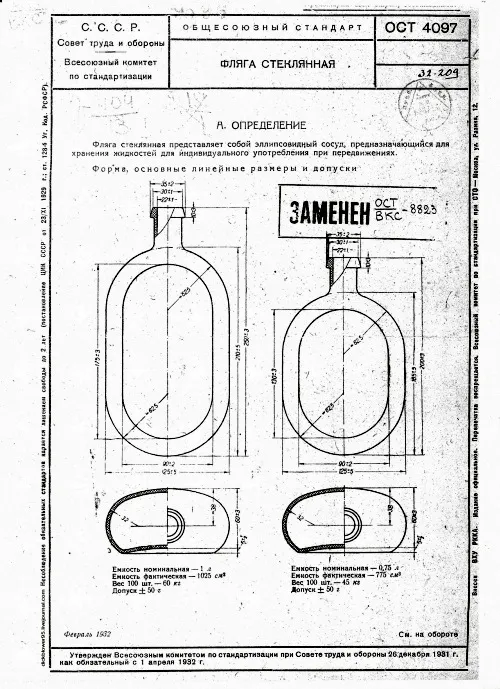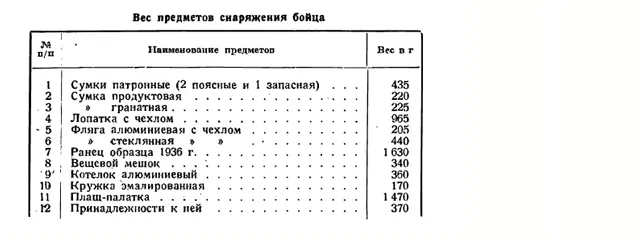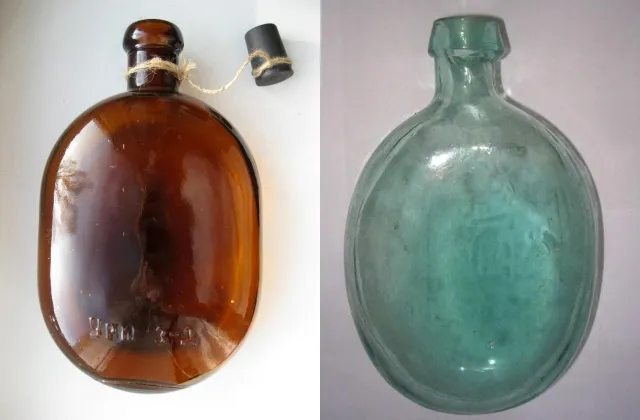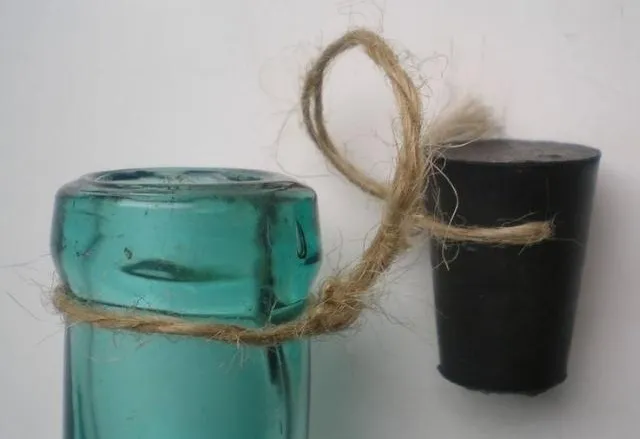I will return to our sheep. So, glass jars are known since the end of the First World War. They entered the army of Germany and the Russian army (RA) after the metal resources were exhausted and it was necessary to buy it abroad or to economize heavily on the leftovers. It was these flasks that were used at the beginning of the formation of the Red Army and the entire civil war, and white and red. In 1932 they again began to produce glass jars. This is an important nuance-practically everywhere sources indicate that the glass jars returned to the Red Army only in 1941, due to the lack of metal. As we see, this statement is erroneous, in the time of peace, flasks of glass were also produced.
Here are the documents.


The use of any mineral additives for glass was allowed. And as a result, the glass jars turned out to be of different colors. Yellow, green, brown, colorless ... Here is a comparison of the shape of the jars of the RI (Tsarist) on the right and the RKKA in 1932 on the left. Apparently, the RKKA flasks are more "angular".


Obviously, the Soviet government did not particularly care for its soldiers in peacetime. After all, a glass jar for a soldier at times inconvenient metal. It is impossible to heat water, it is fragile and very important: it weighs without water (!) 450 gr. In general, during the Second World War, Soviet industry produced jars from any improvised material-even from galvanized iron

Experienced people know how to boil water on a fire and in a plastic poltorashke-but in fact the bottle then has to be thrown out)). The cover is very important for the flask, for easy carrying on the sword belt and on the strap. It also protects from damage and that is very important, being moistened with water, it perfectly cool the contents of the flask, especially if put on a breeze. So, since 1941 there have been cases of a simplified form (though, other researchers point to the pre-war 1940, which I do not know why).
For some reason, in films and books "about war" writers and directors do not write and do not show glass jars. To be honest, I somehow already do not believe that those authors "fought" - such a detail they would easily describe. Perhaps they served somewhere in the rear, without any field outlets, and so they did not give out flasks either? God knows what is really there in the biographies of military writers, and what is invented after the war. With the movie is clear, the props are what they use. By the way, in the films "about the war" they often show the Soviet flask-it easily differs visually from the flask of the Red Army by the number of carving cuts. On the throat of the Soviet metal jar three cuts, and on the analogue of the Red Army, five.
Among the antiquarians, the soldiers' flasks of the Red Army from glass are not uncommon.